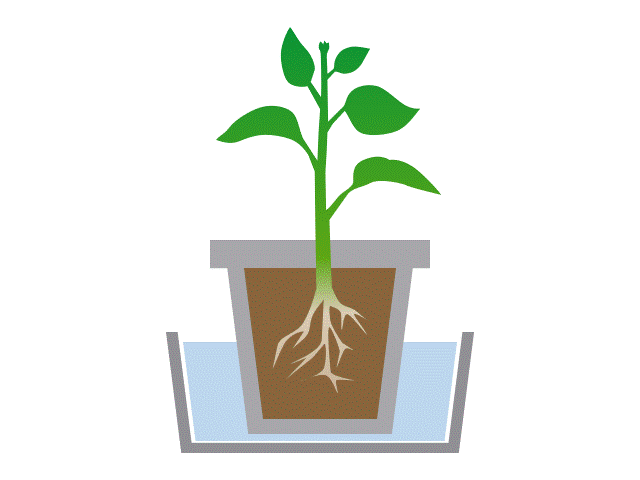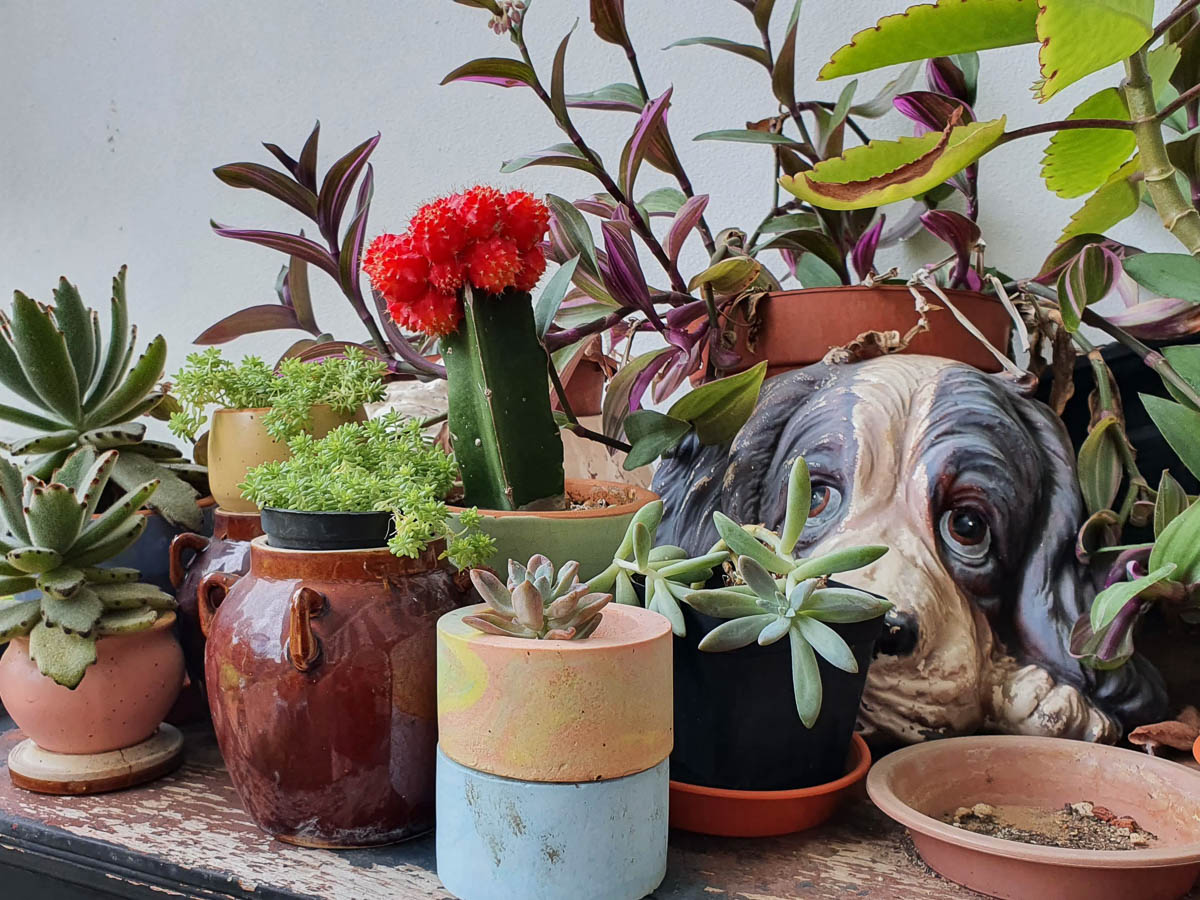Bottom watering
.jpg)
Bottom watering is a technique in which plant pots are semi-submerged in water for up to an hour to allow soil to soak up moisture via a pot’s drainage holes. This technique can only be used for small potted plants that can be easily carried and is ideal for most houseplants.
Why bottom water?

Bottom watering works by capillary action, in which dry soil will soak up water until it can’t hold any more, which is known as the point of saturation. Because the bottom of the pot is sitting in water, water will be sucked upwards by the dry soil until all the soil in the pot is moist. Fully saturated loamy and sandy soils will hold moisture that plants can use but will not hold excess water that could cause root rot. Soaking up water via capillary action is also more consistent than traditional watering, where water may only run down the sides of a pot and leave the center dry.
How do I bottom water?
- Check whether the soil in your pot is dry. It should feel light, and have a dry texture for at least 5cm from the top.
- Place your pots in a container that can hold enough water to cover at least half of the pot, like a sink, bucket, or basin.
- Fill up the container with water between halfway and three-quarters up the side of your pots.
- Leave your plants in the water until the top of the soil becomes moist. This can be anywhere between 20 minutes to an hour, depending on your pot size and soil type.
- Carefully remove your plants and allow excess water to drain out of the pots.
- Replace the pots in their original growing area as needed.
What can I bottom water?

All potted plants can be bottom watered, but plants that are particularly vulnerable to root rot like succulents benefit the most. Plants that have leaves sensitive to water splashing like African Violets also do well with this method.
Take note that fully saturated soil is much heavier than dry soil, so any pots and their associated plants you bottom water should be small and light enough to be easily carried.

